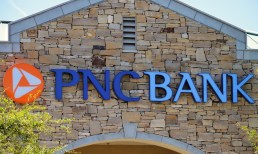Batteries Plus was founded in 1988 in Hartland, Wisconsin, where it is now headquartered. It added the “and Bulbs” to its name in 2013. While some “essential” retailers have done well by capturing the consumer shift to digital, Batteries Plus arguably powers it. It bills itself as the “largest and fastest-growing battery, light bulb and smartphone/tablet repair franchise with a nationwide network of stores.”
And while the name conjures simplicity, the inventory is anything but. The company stocks more than 60,000 types of batteries, light bulbs and accessories, from the most basic Duracell AAs to laptop batteries to car batteries. It also repairs phones, tablets and laptops.
By its own estimates, Batteries Plus sits atop the expanding $32 billion U.S. battery replacement market, the $22 billion U.S. light bulb replacement market and the $2.4 billion smartphone repair industry. Entrepreneur Magazine has rated it among its top franchises for the last seven years.
And the firm’s approach to the digital shift is just as complex as its inventory. Chief Strategy Officer Jon Sica told PYMNTS that the company was completely up to speed with its eCommerce capabilities before the pandemic hit. However, its digital sales model was aimed toward driving traffic to its franchisees, not necessarily for buying through the site (although that is an option.) Then COVID-19 hit. If there was any doubt that the chain was “essential,” Sica noted that his customers – both B2B and B2C – removed that doubt. Hospitals and major corporate clients asked the chain’s executives to remain open, as did customers.
The chain immediately rolled out contactless curbside delivery to accommodate the new dynamics of the pandemic: employees working remotely, first responders and hospitals in need of reliable batteries, students learning virtually, consumers powering up outdoor toys (RVs, cars and boats) and consumers using smart home technology. Many franchisees added staff and expanded their hours to meet consumers’ needs.
Advertisement: Scroll to Continue
One of Sica’s favorite stories is about a store associate who drove out to a customer’s house to install an auto battery because the customer was too wary of the COVID risk to enter the store.
“We never stopped doing device repair, and many customers told us, ‘you were there for me when Apple wasn’t’ during the pandemic,” he said. “That’s not a dig at Apple, we have huge respect for that brand – but it’s not every day you can say you executed better than one of the most valuable brands on the planet, even for a short while. And we delighted in seeing those types of reviews every day, because we know delivering during a crisis forms an emotional connection with customers – and each of them is going to be a customer for life.”
In the Batteries Plus philosophy, the most valuable customers are the ones who advocate for the brand – and that population is growing fast. According to Sica, the company’s net promoter score continues to beat one of the customer experience specialty retail indices it subscribes to, by anywhere from 15-20 points on a weekly basis. The company encourages customers to turn their feedback into a Google review. Positive reviews, noted Sica, are the new word-of-mouth – and that authentic customer-to-customer validation continues to be one of the main ways that Batteries Plus gets customers in the door.
With 723 stores on its roster and its biggest expansion in history underway, marketing to drive the creation and success of its franchises is serious business at Batteries Plus. Sica and his team believe in making data-driven decisions, and the speed and scale of the pandemic accelerated that belief. As the pandemic took hold, his team started meeting daily in a command center-style “war room” format to look at both external and internal data and to discuss how they were driving the business.
For example, Batteries Plus pulled in COVID data at a zip-code level from Johns Hopkins and other institutes, while developing automated reporting at the state level showing the effect of shelter-in-place restrictions and case increases on sales in each state.
“We measure our customer feedback frequently, and that was hugely important when we had to stop interacting with our customers face-to-face during the pandemic,” said Kirtis Hill, VP and head of business analytics. “We quickly found that the comments online provided opportunities for us to improve. My favorite example is contactless curbside. We rolled out curbside in just 48 hours, with full sanitation processes and signage. We learned within a day that customers thought ‘curbside available’ meant they weren’t allowed to come into the store. We quickly pivoted and updated the signage and website, so customers understood they were still welcome inside.”
As it currently stands, Sica and his team are becoming digital-first while keeping franchisees as their top priority. Inventory is available online, but shoppers are encouraged to visit the nearest store, which is immediately displayed when an item is selected.
“It was more optimization than expansion for us – among retailers and especially franchises, we started the pandemic with robust digital capabilities,” Sica noted. “Our strategy has always been to drive traffic to our stores so that our franchisees benefit directly from eCommerce. As a result, our mix skews heavily to BOPIS (buy online, pick up in-store) over D2C (direct to consumer).
“Contactless curbside was easy because we were already doing it,” he continued. “We were able to win during the pandemic, as conventional eCommerce distribution centers were shut down or over capacity while we were still fulfilling more than 60 percent of orders in only five hours.”




